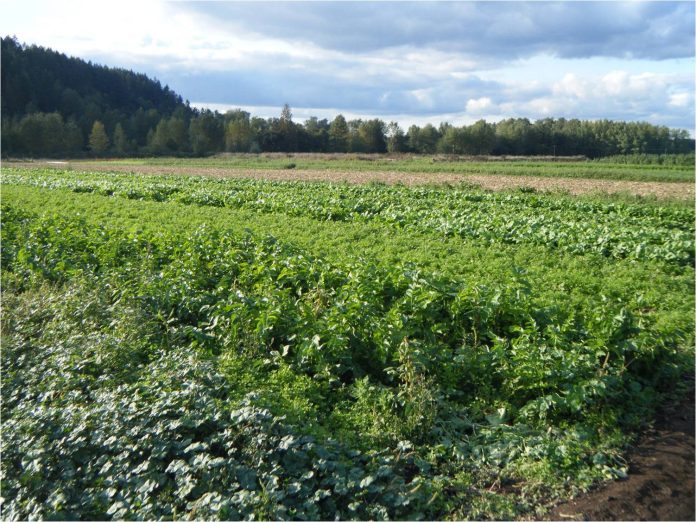The future of agricultural lands stands at a crossroads in Pierce County. For more than a year, Pierce County has been locked into a fierce process over how to remake county-wide agriculture policies. Pierce County is an agricultural powerhouse with more than 4,500 independent producers that collectively manage more than 48,000 acres of land. The economic impact from their agricultural production is estimated to top $100 million per year. But only a small subset of lands receive special protection with an Agricultural Resource Lands (ARL) designation; the remaining rural and agricultural lands contain less protective designations and zoning.
On Friday, Pierce County Councilmember Derek Young (D-Gig Harbor) sounded the alarms on a major committee vote that could either set back agricultural lands policy decades or move it forward. If the county council chooses poorly among the proposals at hand, thousands of acres of prime agricultural lands could be lost forever–likely to be gobbled up by the suburban growth machine for quick easy gain that will ultimately prove fleeting for the county and ultimately the planet.
Background
The state’s Growth Management Act (GMA) requires that counties proactively designate valuable resource land for agricultural production. RCW 36.70A.030(2) expressly states:
(2) “Agricultural land” means land primarily devoted to the commercial production of horticultural, viticultural, floricultural, dairy, apiary, vegetable, or animal products or of berries, grain, hay, straw, turf, seed, Christmas trees not subject to the excise tax imposed by *RCW 84.33.100 through 84.33.140, finfish in upland hatcheries, or livestock, and that has long-term commercial significance for agricultural production.
The requirement in the GMA to designate and protect agricultural lands is what initially directed the Pierce County to develop criteria and a process in the 1990s. The county has six pieces of criteria in place to do just that. In order for a property to qualify for the ARL designation, it must meet the following criteria:
- Be located outside a designated Urban Growth Area:
- Be five acres or greater in size;
- Consist of at least 50% “prime farmland” soils;
- Have a production yield of at least 3.5 tons of grass and/or legumes per acre;
- Have at least 50% of adjacent properties be greater than one acre; and
- Landowners of qualifying properties may voluntarily request the designation.
The ARL destination is comparably restrictive over other land use designations and zoning, as indicated in the following:
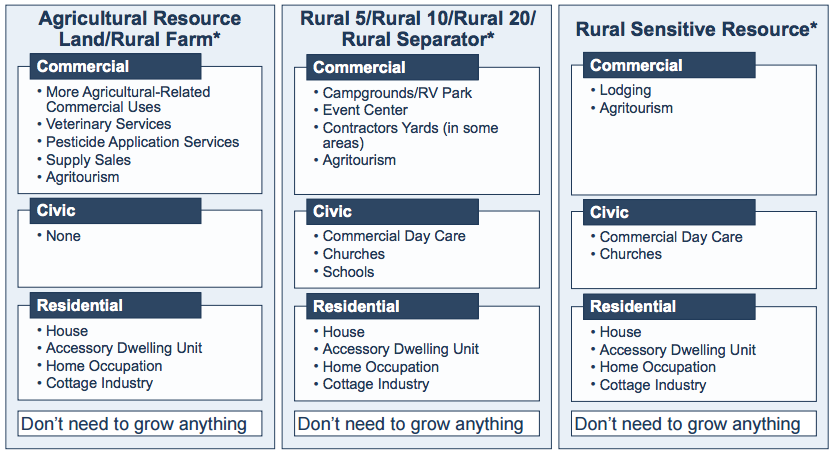
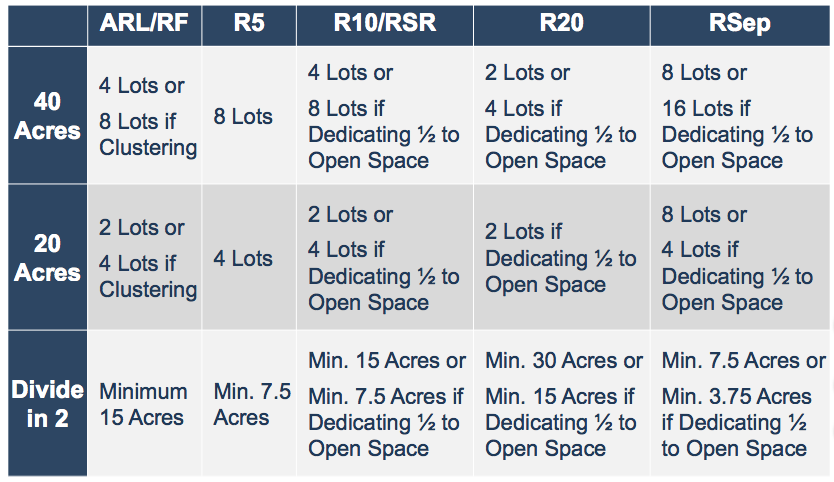
Last year, Pierce County began a comprehensive process to review the county’s policies regulating agricultural lands under an initiative dubbed “A Fresh Look at Pierce County Agriculture.” The goal of the initiative was to develop recommendations on county policies that could be modified through the annual amendment process to the county-wide Comprehensive Plan. The intended effect of this also envisioned corresponding map amendments to zoning and future land use designations to reflect changes in agricultural land designation criteria.
Three Proposals
In 2016, the county commissioned a consultant to develop recommendations on what should change. The consultant recommended four core changes to criteria in designating properties as ARL:
- Raising the minimum parcel sizes, depending upon the agriculture production district;
- Modifying the criteria for when land contains at least 50% “prime farmland” soils;
- Removing the criteria related to the production yield of 3.5 tons per acre grass and legumes; and
- Modifying the criteria for when 50% of adjacent parcels are greater than one-acre, depending upon the agricultural production district.
According to the consultants, a total of 22,951 acres are already zoned ARL, but the criteria would eliminate 14,322 acres that don’t meet it. Nonetheless, their recommended criteria would actually increase the total acreage zoned ARL by more than a third to 30,918 acres–that’s despite reducing the number of ARL-designated parcels from 1,502 to 751. Using their methodology, the changes would play out as depicted in the map below:
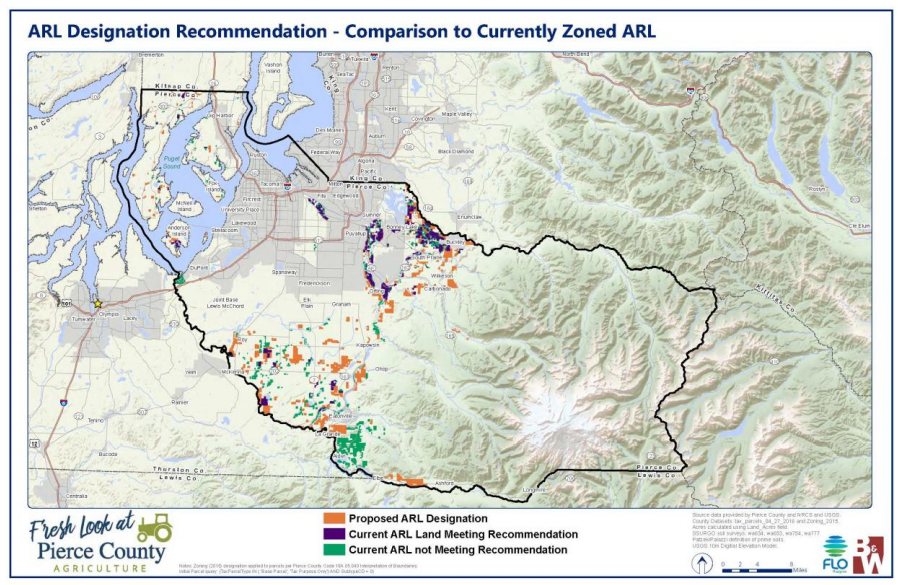
County staff followed suit with their own recommendations, which were primarily based off of the consultant recommendation. The main difference between the two was the added inclusion of voluntary ARL properties that the public offered during the public review process and some exclusions. The criteria that county staff recommended is summarized in the table below:
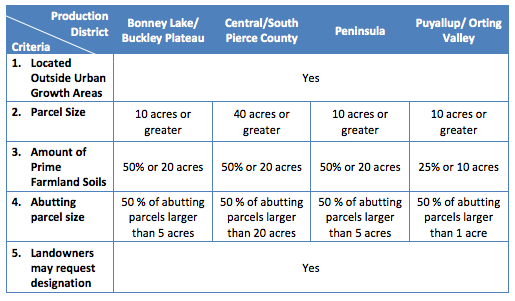
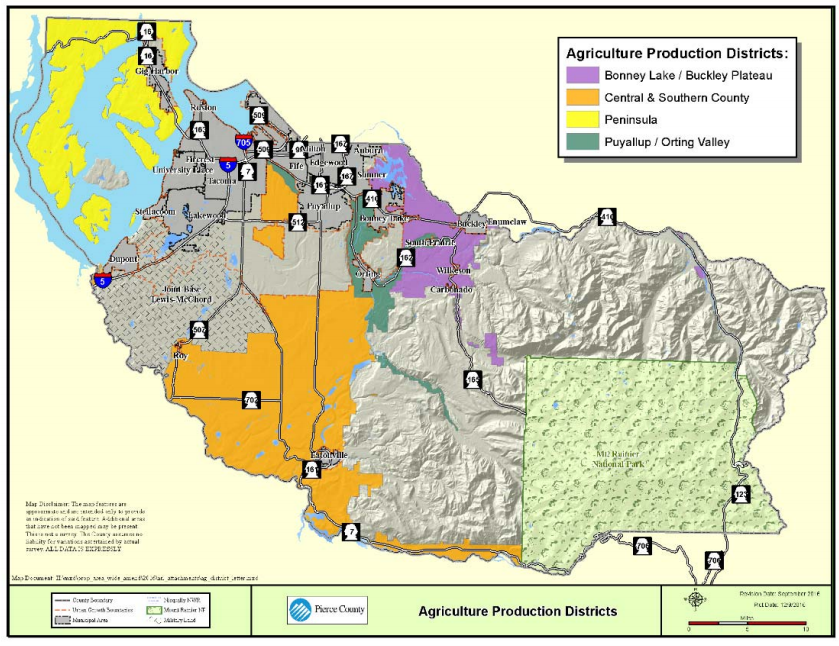
Using the criteria and selected property inclusions and exclusions, county staff estimated that Pierce County would achieve a net increase in total acres designated as ARL, but slightly less than the consultant recommendation with 29,388 acres of ARL properties.
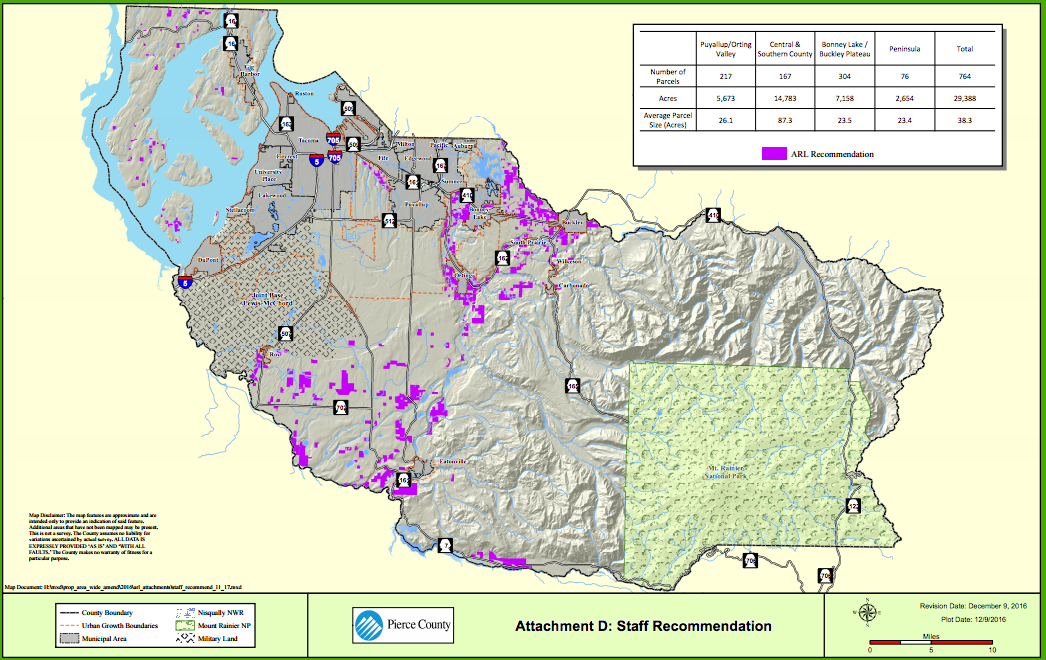
Once the proposal was sent to the Planning Commission, some major sausage-making resulted in scraping much of the recommendations made by the consultant and county staff. The Planning Commission recommended that the county only have two agricultural production districts as opposed to four, reduced the qualifying parcel sizes, modified the prime farmland soils criteria, and reintroduced the grass and legume production standard. The Planning Commission’s recommendation also greatly expanded the list of property exclusions.
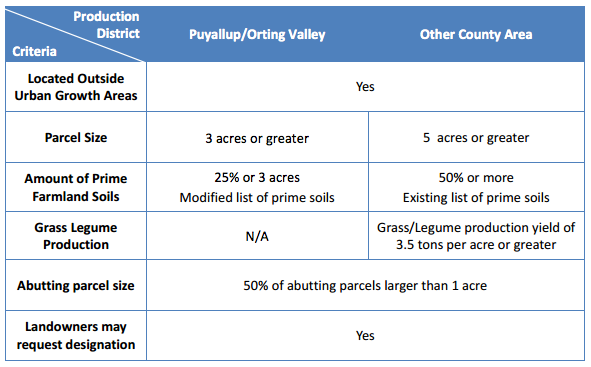
The result of the changes would be a net decrease in total acres designated as ARL in Pierce County from 22,951 acres to 14,414 acres, a 37% decrease.
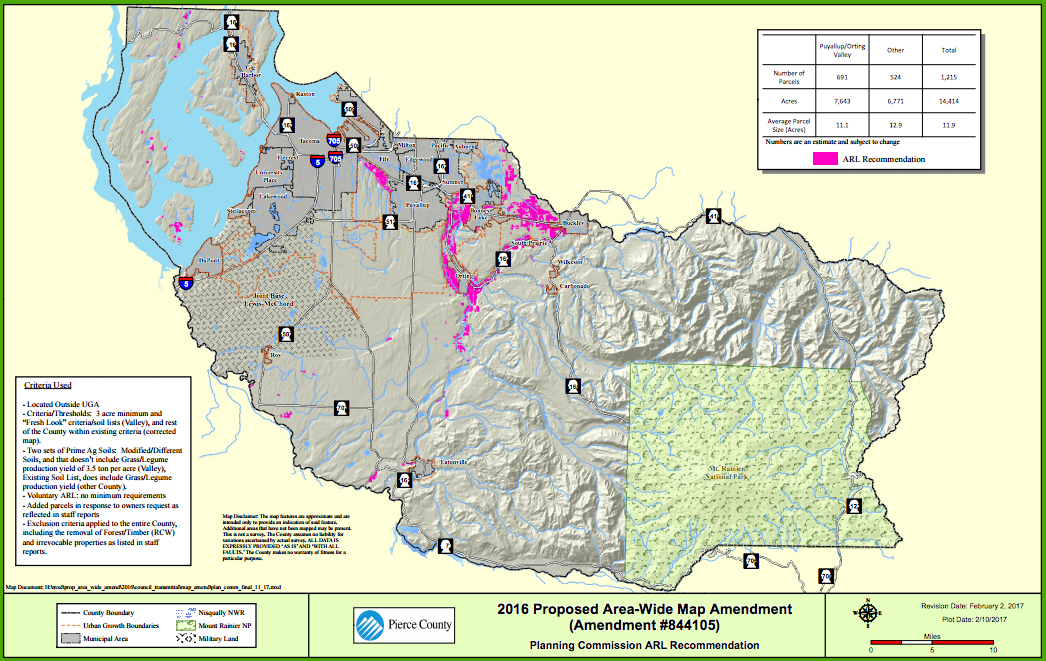
Pierce County Council
The proposal is now before the Pierce County Council, which has the power to either help or hurt the future of agriculture in the county. Four separate amendments are under consideration by the council’s Community Development Committee:
- Councilmember Derek Young is proposing an amendment (Amendment 1) that would closely resemble original staff proposal for designating properties as ARL. The result of his criteria and proposal would result in 22,392 acres of properties designated ARL.
- Councilmember Jim McCune (R-Graham) is proposing an amendment (Amendment 2) that would further waterdown the proposal to designate properties as ARL. The result of his proposal would reduce the total acreage of ARL to 11,623 acres.
- A second amendment by Councilmember McCune (Amendment 3) would be similar to Young’s amendment, but it would increase the required amount of farmland soils for properties in the Puyallup/Orting Valley agricultural production district to 50% and essentially restore the grass and legume criteria. Again, this proposal is designed to waterdown the proposal offered by Councilmember Young.
- A third amendment by Councilmember McCune (Amendment 5) would essentially maintain the status quo with no policy changes to agricultural lands. The result would be 23,661 acres of land designated ARL. (Amendment was adopted.)
The truth of the matter is that all of these amendments are poor responses to protecting and sustaining agricultural lands. Councilmember Young’s is a compromise that at least approximates the status quo with more straightforward criteria, but it doesn’t lift up agricultural lands by recognizing them to the same degree that the consultant and Pierce County staff recommendations sought. Meanwhile, Councilmember McCune’s amendments are all over the board, with most seeking to eliminate agricultural lands and empower the suburban sprawl machine–which is directly at odds with the goals of the GMA.
The Pierce County Council’s Community Development Committee will meet today (April 3rd) at 1.30pm to discuss the amendments. You should voice your support for expanding and lifting up agricultural lands by protecting more, not less.
Doug Trumm is publisher of The Urbanist. An Urbanist writer since 2015, he dreams of pedestrian streets, bus lanes, and a mass-timber building spree to end our housing crisis. He graduated from the Evans School of Public Policy and Governance at the University of Washington in 2019. He lives in Seattle's Fremont neighborhood and loves to explore the city by foot and by bike.

